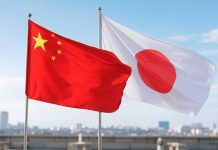BEIJING: As thousands of China’s top legislators and political advisors prepare to convene in Beijing on Thursday for the annual two sessions, they are tasked to review and discuss various policy priorities and sweeping development plans designed to further lift the country to new milestones in the next 15 years: a modern socialist power with world-leading national strength and global influence.
The annual legislative and political consultative sessions are usually a window into policy agenda and various economic and social development targets for the year. But coming at a crucial inflection point, as the country transitions into a new five-year plan and longer development visions, this year’s meeting will also provide a clear direction and blueprint of where the world’s second-largest economy is headed, following decades of rapid growth and mounting internal and external risks. That would follow a precedence set in 2020, when China did not set a specific target for the first time in decades.
One of the most closely-watched items on the agenda is China’s official GDP growth target. But in keeping with the country’s shifting focus toward quality over quantity and reflecting mounting uncertainties, a specific numerical GDP target this year may not be released at the two sessions and instead put more emphasis on jobs, consumer prices, fiscal and monetary policies as well as risk aversion, some analysts said.
However, others noted that certain types of growth, such as a range or a growth floor of 6 percent, could be adopted to better coordinate policy and offer guidance and a longer-term goal to become a mid-income country by 2035 could imply an average annual growth of about 5 percent in the next 15 years.
Growth target: Growth targets and other policy priorities will be contained in a Government Work Report to be delivered at the opening session of the National People’s Congress (NPC), the top legislative body, which is scheduled for Friday. Deputies to the NPC and members of the Chinese People’s Political Consultative Conference (CPPCC) National Committee, which will open its annual session on Thursday, will then discuss and review the report before adopting it at the end of the meeting.
Expected in the report to be delivered by Premier Li Keqiang are a slew of social and economic development targets, which usually include GDP growth, inflation rate, new job creations, and unemployment and budget deficit.
It remains unclear whether a GDP growth target will be released in the report, but some economists and institutions said that a specific numerical one is unlikely to be released given the shifting focus in policy priority and mounting uncertainties.
“There are different views on setting a GDP growth target, but it’s more likely that a target would not be released,” Guan Tao, chief global economist at BOC International (China) and a former senior official at the State Administration of Foreign Exchange, told the Global Times on Tuesday, adding that setting a specific target would enhance the stress on speed, while the country aims for high-quality.
Facing uncertainties brought by the COVID-19 pandemic, China skipped setting a numerical GDP growth target in 2020. The country has also been adopting a target range instead of a specific one over the past several years amid external risks.
– The Daily Mail-Global Times News exchange item





